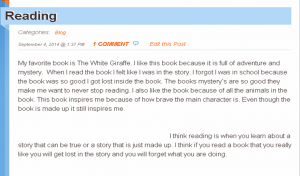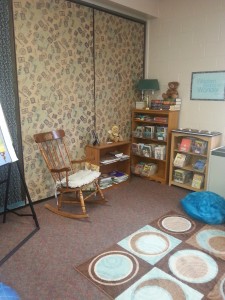In my first post, I said I was in an alumni production of Our Town. Now, the play is over, and the reviews are in. Wilder’s play survived my assault on Doc Gibbs, but the experience has me thinking about teaching writing.
Audience is everything.
 Different disciplines define “audience” using other words, but it all comes down to the perception and experience of the end user. All products, all successful products, are designed with the user in mind, as determined by product testing or a focus group. Art and music, while often very personal, succeed when they “find and audience.” Sketching, journaling, and playing random chords because they please you is fine because you are the only audience. But if you want to find out if you’re good, however that’s defined, you need an audience.
Different disciplines define “audience” using other words, but it all comes down to the perception and experience of the end user. All products, all successful products, are designed with the user in mind, as determined by product testing or a focus group. Art and music, while often very personal, succeed when they “find and audience.” Sketching, journaling, and playing random chords because they please you is fine because you are the only audience. But if you want to find out if you’re good, however that’s defined, you need an audience.
What’s the measure of success in writing? Did it achieve the writer’s goal with her intended audience? As a teacher, I know that my goal is for my students to be successful actors in the play that we call writing. I am both the director as I guide them through the process, and a participant as I write alongside them. But where’s our audience? Who are we working so hard for? How do we know if our choices are the right ones if we never get to see the audience, hear them laugh in the first two acts, and then go silent in the third because we set them up for that on purpose?
When we rehearsed Our Town, our only audience was each other and the director. We ran our lines and worked through how to deliver them, but we had no idea how they’d be received by an actual audience. There were places that we suspected would be funny or poignant if we delivered the lines well, but we didn’t really know if they would work as we expected them to. There were words and phrases that we had to say, either because another character depended on hearing them as a cue to deliver another line or because they were vital to delivering some thematic idea. We had to be fast and bright in the first two acts because we planned to shock the audience with our somber tone in the third.
The director helped us imagine our audience and what they would see and hear, but that’s not the same thing as having an audience. The whole endeavor, the play, was aimed at the audience, not me. I was having fun, but the audience was who I was working for. When we did perform the play, we knew where it worked because we could see and hear the audience react. It was a rush when we got it right, and it stung when it fell flat, but at least we knew for sure what the audience thought.
That idea lingers.
 In the past couple of years, I have been putting more and more emphasis on the importance of audience in writing. I talk with my students about who their audience is, its characteristics, what moves it, and recently, we talked about what might delight the audience. The mantra “when you write for everyone, you write for no one” echoes through my room as we try to imagine that one person we’re trying to reach. (I know who it is for this piece.)
In the past couple of years, I have been putting more and more emphasis on the importance of audience in writing. I talk with my students about who their audience is, its characteristics, what moves it, and recently, we talked about what might delight the audience. The mantra “when you write for everyone, you write for no one” echoes through my room as we try to imagine that one person we’re trying to reach. (I know who it is for this piece.)
The problem is–it’s fake. There is no audience, not really. We give excellent feedback to each other, but it isn’t the same thing as having an audience. I had been aware of that, but until I walked across a stage and delivered my lines for a real audience, I didn’t feel it. I do now, keenly. The question becomes: where do I get an audience for my students?
My students have been blogging for years, and my use of new media platforms has evolved from a place for me to make announcements to a static discussion board to a place where my students can engage each other. But the audience is still “us,” the theater company. We are currently setting up blogs on Tumblr. This will be our third year on that site, and I have a decent sense of how to use it to talk about 21st century writing, but my goal this year is to try and get my students’ best work in front of a real audience. I’m not entirely sure what that will look like or if I can accomplish it. Is this something I can do using Tumblr blogs, or is that still too insulated?
Peer feedback is another option I’m working hard on, but again, it doesn’t feel-big enough. When I was at an NCTE Conference, I saw a presentation on having a Writers Week, but that’s a ton of prep for really only one week. I’m looking for help here, gentle reader. If you have a suggestion, please share it. I want my students to feel the sting of missing a line, or having something they think will work fall flat, and then come back with a better idea. I want them to know their writing has succeeded, not because I gave them an “A,” but because they can hear the laugh and see the audience cry a little in the third act.
 Rick Kreinbring teaches English at Avondale High School in Auburn Hills, Michigan. His current assignments include teaching AP Language and Composition and AP Literature and Composition. He is a member of a statewide research project through the Michigan Teachers as Researchers Collaborative partnered with the MSU Writing in Digital Environments Program, which concentrates on improving student writing and peer feedback. Rick has presented at the National Advanced Placement Convention and the National Council of Teachers of English Conference. He is in his twenty-third year of teaching and makes his home in Huntington Woods.
Rick Kreinbring teaches English at Avondale High School in Auburn Hills, Michigan. His current assignments include teaching AP Language and Composition and AP Literature and Composition. He is a member of a statewide research project through the Michigan Teachers as Researchers Collaborative partnered with the MSU Writing in Digital Environments Program, which concentrates on improving student writing and peer feedback. Rick has presented at the National Advanced Placement Convention and the National Council of Teachers of English Conference. He is in his twenty-third year of teaching and makes his home in Huntington Woods.





 This is a huge undertaking that is born out of reflection and the desire to do what I know is best for my students. I know that having an authentic audience and getting consistent feedback inspires and motivates my learners. Our district Ed Tech Specialist just gave me a link to a site called
This is a huge undertaking that is born out of reflection and the desire to do what I know is best for my students. I know that having an authentic audience and getting consistent feedback inspires and motivates my learners. Our district Ed Tech Specialist just gave me a link to a site called  Beth Rogers is a fifth grade teacher for Clarkston Community Schools, where she has been teaching full time since 2006. She is blessed to teach Language Arts and Social Studies for her class and her teaching partner’s class, while her partner teaches all of their math and science. This enables them to focus on their passions and do the best they can for kids. Beth was chosen as Teacher of the Year for 2013-2014 in her district. She earned a B.S. in Education at Kent State University and a Master’s in Educational Technology at Michigan State University.
Beth Rogers is a fifth grade teacher for Clarkston Community Schools, where she has been teaching full time since 2006. She is blessed to teach Language Arts and Social Studies for her class and her teaching partner’s class, while her partner teaches all of their math and science. This enables them to focus on their passions and do the best they can for kids. Beth was chosen as Teacher of the Year for 2013-2014 in her district. She earned a B.S. in Education at Kent State University and a Master’s in Educational Technology at Michigan State University.